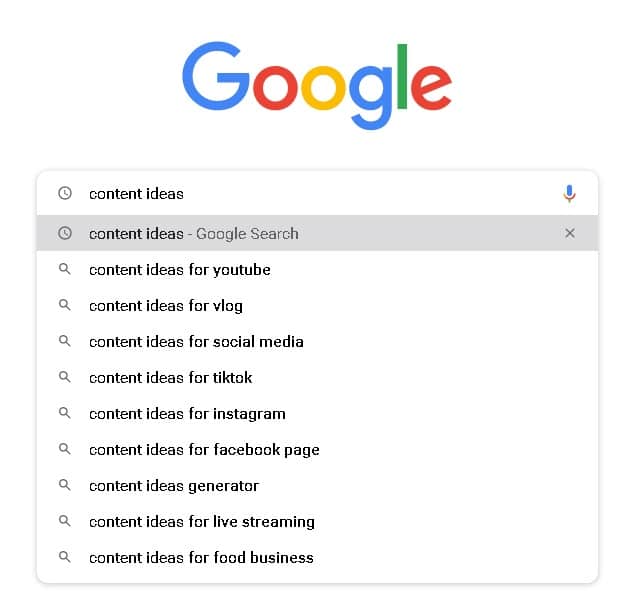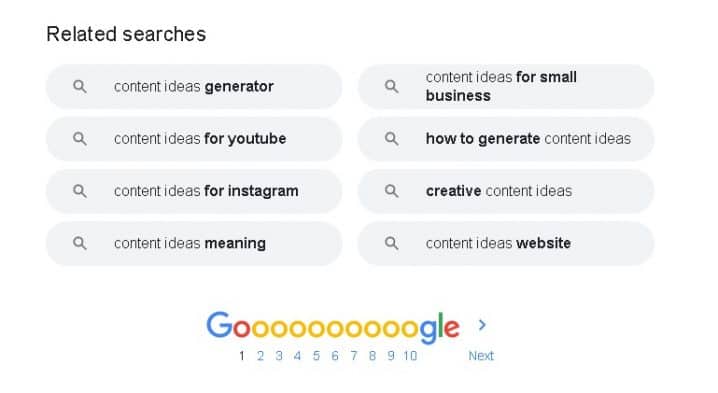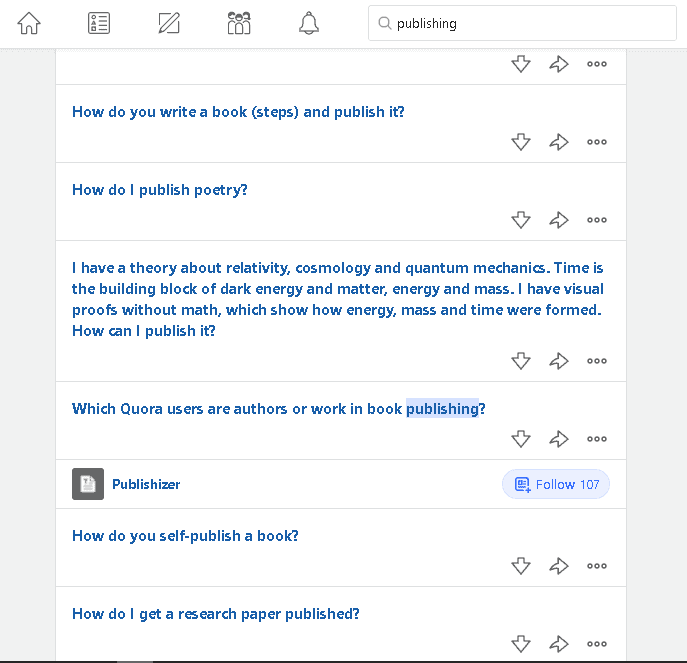
In a 1996 essay, Bill Gates coined a prophetic phrase that became every marketer’s byword: Content is King. Fast-forward two decades later and we see thriving businesses that rely on making content to generate money and obtain followers.
In the time since Gates coined the phrase, the internet has grown vastly and the importance of quality content has increased exponentially. But what exactly is content?
Sourcing Content Ideas
When you’re devising a plan for your content, you need to think about your audience, what they find valuable, and the right kind of medium to deliver it. And those are just the basics of it—once you get to actually creating content, any number of obstacles can pop up, including writer’s block. It’s not easy to be consistently creative!
To help you keep up a steady stream of quality content, here are a few resources you use for making blogs, videos, e-books, podcasts, and whatever content you choose. It’s always a good idea to keep track of your ideas in a list in order of priority (an Excel sheet can be especially helpful).
1. Competitors
Checking out the competition is always a good strategy. See what content they have that you don’t and evaluate it to determine whether a topic is worth including on your platform.
Make your content different, but most importantly, more valuable than theirs. Identify what their content lacks and add that to yours. This way, you’re bringing your audience more value while separating your own content from your competitors.
2. Your Followers
Start with the people who follow you. See what they’re talking about and what they’re interested in.
You could even ask them directly. This will solidify the community you’re trying to build around your brand by making them feel that they’re part of your creative process. And since content is user-driven, their answers will help you immensely with how to develop your brand.
Also, it’s always good practice to review any comments you receive on your posts, which will likely be a mix of feedback and suggestions. You can use this input to create and improve your future content.
3. Industry Leaders
Identity the leading figures in your niche or industry and make a point to follow them. These are the people who are guaranteed to be at the top of their game when it comes to your chosen subject.
Aside from what they discuss in their own content, check out their discussions with other people, whether in interviews or comments.
4. Search suggestions
Search engines offer a fast and easy way to generate content ideas. Ever notice those suggestions every time you do a search? Those indicate the most common related searches. For best results, use Google, since it’s the most popular search engine out there.

Type in any topic you have in mind and check out what Google suggests. They could all be possible content ideas. This works because the results you see are sure to be relevant to your audience.

In addition, once you’ve searched something, check out the Google questions and related searches. They might have additional ideas you can use.
If you’re not sure what to search for, start with broad topics and keep narrowing it down, or search for ideas you’ve already covered and look for related ideas.
5. Content Idea Generators
There’s a lot of software you can use to generate ideas. You only need to type in any keyword you want and it will do the rest. Below are two decent ones I’ve found:
6. Newsletters
Subscribe to newsletters of sites from within your niche. These will keep you up to date on news, events, and trending topics. The best part is once you’ve subscribed, you only need to wait for them to bring information to you.
Some newsletters will provide you with ideas you can use or inspire you to create something entirely different and new.
7. Forums
Forums offer a great way to see what topics are currently trending. Check out the communities within your niche or similar niches.
Quora and Reddit are forums where you can find discussions on any topic under the sun. Simply search for your niche or any related topics and you’ll probably find something interesting to base your content on.

Take a look at the image above. A quick search for “publishing” already gives me a few possible ideas.
8. News about your brand
Share exciting news about your brand. This keeps your audience in the loop. Post a photo celebrating a milestone. Thank a person who helped you out. Introduce a new update or feature.
Do this especially when there’s a major internal change. Say you’re selling a product and decide to change the return policy. Imagine your customer’s frustration when they discover the changes only when they’re already trying to return the product.
In sharing these tidbits, you also humanize your brand and show that you care that people are up to date. Your audience doesn’t feel like they’re interacting with a faceless and foreign entity. Instead, your brand feels like a friend they’ve known for years.
Here are two examples of such posts:
- How We Got 1,250+ Amazon Reviews for a Novel in One Year
- How We Sold 300,000+ Books without a Big Marketing Budget
9. Contests and giveaways
Rewarding your audience is a way of letting them know they’re important to you. You might even attract new followers as word about your contest spreads.
The prizes don’t need to be grand. What’s important is you tie them to your niche. This way, you immediately attract your audience’s attention. For example, say your niche is in gaming. It won’t make sense to offer a pair of shoes as a prize. A mechanical keyboard, deskmat, or mouse might be something your audience would be interested in, though.
Be sure to read up on legal requirements before doing this and always decide carefully on terms and conditions.
10. User-Generated Content
User-generated content or UGC is any content that is created by a consumer and usually shared through social media. It’s one of the most effective content strategies there is, as it’s people promoting your brand, instead of your brand promoting itself.
GoPro is one of the biggest brands to ever feature UGC in a major way. Fans of the brand regularly post images and videos taken using their products. To keep that going, GoPro began incentivizing their UGC. They created the GoPro rewards, awarding the best UGCs with gear, money, or social standing.
UGCs offer surefire ways of attracting new followers, making sales, and increasing trust. It’ll give your audience a chance to participate in your platform. Incentives are optional, but can further solidify your UGC campaigns.
11. Create a Series
Have you ever heard of Throwback Thursdays? It’s a popular hashtag people use with a simple premise: on Thursdays, social media users post nostalgia-inducing photos from their past.
You can emulate this idea by creating a series of content that runs on themes, publishing them on specific days. It’s your choice how often you do it. Most people do a recurring theme weekly or monthly.
Take popular Youtubers Jacksfilms, PewDiePie, and Davie504 as examples. Each of them has a version of “Yesterday I Asked You” where they ask a question, pick their favorite answers, and discuss them a few days later. These video series have proven to be extremely popular.
Your series can be as simple as doing product reviews only on Fridays and random topics every Monday. This tells your audience what to expect and when to expect it. It also gives you a template to work on so you spend less time thinking about what content to create next.
12. Revisit Previous Content
Your old content need some attention too. If you’re struggling to generate new ideas, maybe it’s time to revisit your past ones.
Review your old content for anything might have missed, or any new angles you can try. For example, if you’ve written about email marketing, you might create a list of email marketing tools. Though the topics are similar, they’re different and important enough to warrant separate posts.
Sometimes old content needs to be updated, especially when it deals with important topics. You wouldn’t want to be the source of inaccurate information. Say you’ve written about sleep studies and added information that has been proved incorrect later on. That could hurt your credibility and make you lose the trust of your audience.
What Is Content?
Content is a catch-all term for any information or experience that you provide to your audience. It can take many forms and is delivered via a wide selection of media.
For example, a YouTuber’s content is primarily in video form and is distributed through the YouTube platform. Similarly, a blogger’s content is the blog articles they write, provided through their website.
Content is also largely user-driven. Your value depends on how useful your content is to your audience. If they don’t benefit from it, then you don’t benefit from them, so you need to make sure that your content is always valuable to the people you’re targeting.
But with tons of competitors, how do you think up content that’s unique and fresh?
More Ways to Generate Content
While your creativity may stall from time to time, it’s never the end of the world. Creative blocks are a normal occurrence for creative people; you just need some content pick-me-ups and strategies to get you back in the game!
Fortunately, there are many options for jumpstarting your creativity, and they’re not limited to the 12 strategies for sourcing content I mentioned here. As you work on generating new content, you might discover other methods that work better for you.
How do you find new content ideas? Share your tips in the comments below!
If you enjoyed this post, then you might also like:
- 15 Paid Online Productivity and Time Management Courses to Help You Get More Done
- Top 8 Online Time-Tracking Tools: Improve Your Process and Productivity with Accurate Time Management
- How to Improve Your Handwriting: 7 Steps for Better Print and Productivity
- Time Management for Writers: The Stopwatch Method for Massive Creative Productivity

Cole is a blog writer and aspiring novelist. He has a degree in Communications and is an advocate of media and information literacy and responsible media practices. Aside from his interest in technology, crafts, and food, he’s also your typical science fiction and fantasy junkie, spending most of his free time reading through an ever-growing to-be-read list. It’s either that or procrastinating over actually writing his book. Wish him luck!

This is great material encouraging and advising new writers like me
Thanks for the stuff
You’re very welcome Davison, we’re glad you found the post encouraging :)
IT WAS INTERESTING TO KNOW HOW TECHNOLOGY HAS ADVANCED IN PUBLISHING INDUSTRY
I’m glad you found the post interesting :)